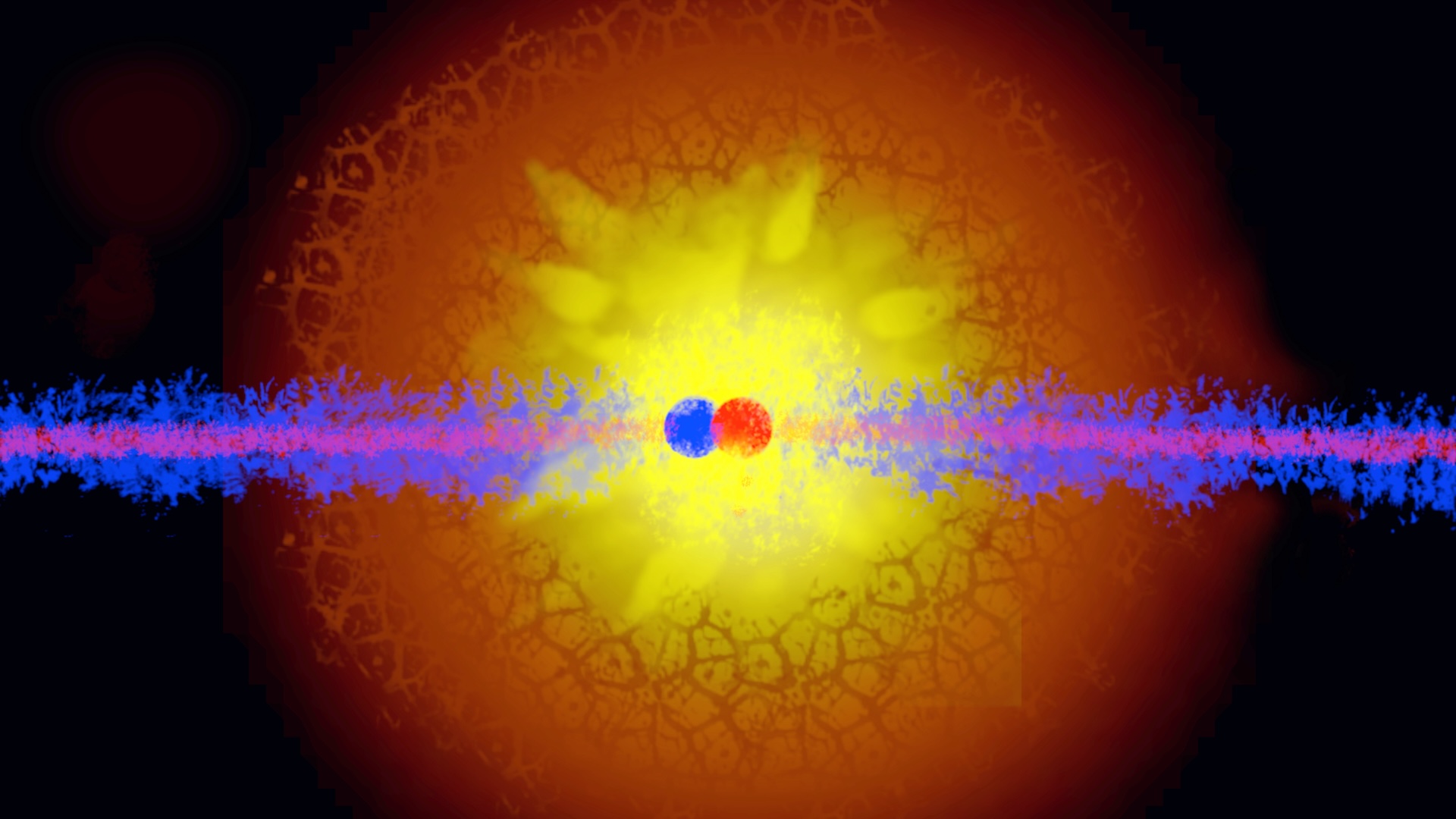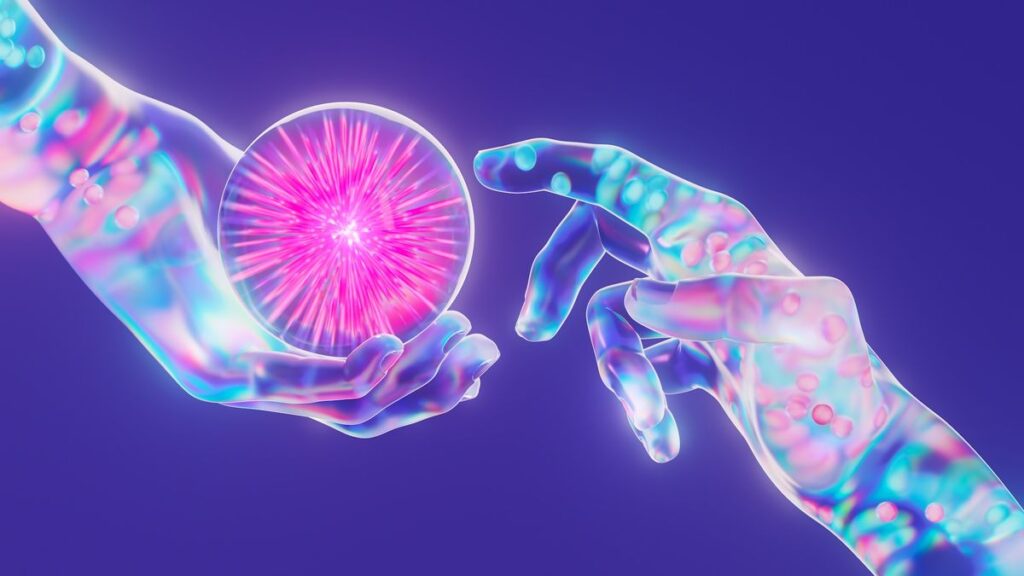From nearly indestructible metals, like tungsten, to delicate clouds in the sky, atoms make up everything around us. But do these atoms ever touch each other? As with most topics in atomic physics, the answer is more complicated than you might expect.
Before we can answer this question, it’s important to define what we mean by “touch,” said Christopher Baird, an associate professor of physics at West Texas A&M University.
“On the human scale, what we usually mean when we say that two objects are touching is that the well-defined outer surface of one object resides at the same location as the well-defined outer surface of the other object,” Baird told Live Science in an email. “[But] this type of touching does not really make sense at the atomic scale because atoms do not have well-defined outer surfaces.”
An atom is neither a solid object nor the smallest unit known to scientists. Instead, an atom is made of many different particles that interact according to specific rules. At its core, an atom is a nucleus surrounded by a cloud of electrons.
But a closer look reveals that this nucleus comprises protons and neutrons, which are made up of particles called quarks and gluons. Atoms of different elements have different numbers of protons, neutrons and electrons. For example, a hydrogen atom has one proton, one electron and zero neutrons, while uranium has 92 protons, 92 electrons and up to 146 neutrons. (The numbers of neutrons in an element can vary depending on which isotope it is.)
Related: Do quantum universes really exist?
An atom’s cloud of electrons makes it difficult to determine an exact boundary for “touching,” Baird said. Instead, it is more useful to define it as the point that triggers a physical or chemical effect, such as the creation of chemical bonds. This may arise when atoms’ electron clouds overlap significantly, he said.
“They touch when the electron orbitals of one atom overlap enough with the electron orbitals of the other atom that physical or chemical effects start happening,” Baird explained. “This is probably one of the best definitions for touching on the atomic scale.”

This “touching” can be a result of different forces, including electromagnetism, gravity and quantum mechanics. Liquids and solids typically touch through the creation of chemical bonds, Baird said, and gases touch by bouncing off each other.
Another form of touching can take place when particles collide at high speeds, like in a particle accelerator like CERN’s Large Hadron Collider in Switzerland, said Zhiquan Sun, a doctoral candidate at MIT’s Center for Theoretical Physics.
“When atoms collide with each other with high enough energy so that their electron clouds overlap … the nuclei might undergo elastic or inelastic collisions,” Sun told Live Science in an email. “If the collision is elastic, the nucleus simply changes directions and finds its electrons again and becomes the same atom it was. If the nuclei collide inelastically, it breaks apart into protons and neutrons and these may form different nuclei.”
At CERN (the European Organization for Nuclear Research), particles collide at very high energies to break particles apart and even form new, subatomic particles, like the Higgs boson. Similar collisions likely took place in the early universe.
At the end of the day, even though atoms don’t touch in the same way we do, atomic touching is what makes up life as we know it, Baird said.
“A chair or a rock could not hold itself together in the shape of a chair or a rock if the object’s atoms were not touching each other through their chemical bonds,” he said. “All material effects arise from some form of atoms touching each other, including chemical reactions, vibrations, sound waves, heat, and so forth.”
